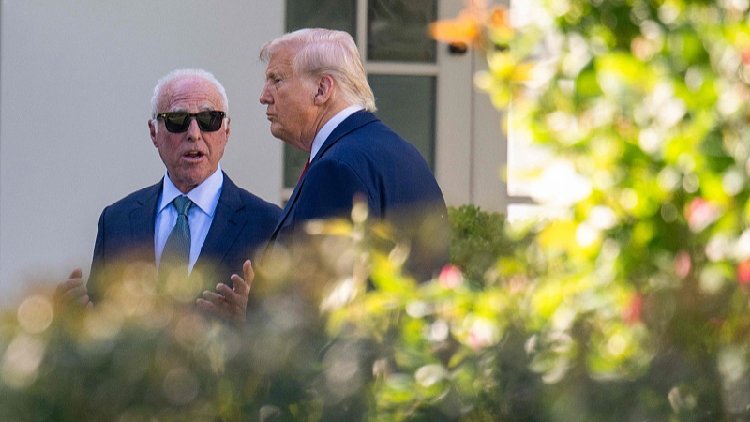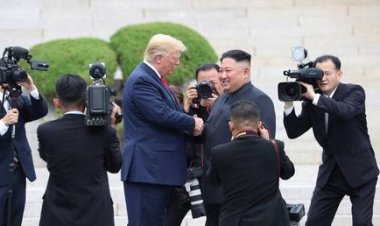Trump's Initial 100 Days: Demolition Without Rebuilding
There are notable parallels between Trump's first and second terms; however, a critical distinction is his goal to elevate "creative destruction" by significantly reducing the federal bureaucracy, cutting expenses, and downsizing the domestic workforce. On the international front, the increase in tariffs—rising by at least 10 percent—has caught many allies off guard and in a state of confusion.

As U.S. President Donald Trump approaches the 100-day mark of his second term, the administration’s policy priorities, internal dynamics, and style of governance have become clearer. While notable similarities exist between his first and second terms, a significant distinction is Trump’s aim to elevate "creative destruction" by implementing a dramatically reduced federal bureaucracy, cutting expenditures, and scaling back the domestic workforce. On the international stage, the imposition of tariffs—raising by at least 10 percent—has left many allies surprised and confused. These actions reflect a broader pattern of upheaval.
The initial reactions, both domestically and globally, were largely negative. Economically, despite starting with a relatively robust economy inherited from the Biden administration—characterized by swiftly declining inflation and record-low unemployment—the stock market took a nosedive following Trump’s tariff announcements. Since then, market fluctuations have intensified as a global trade war escalates. Unemployment is creeping upward, and consumer sentiment is sharply declining, leading to increasing pessimism among Americans regarding the economic outlook.
Politically, a Pew Research Center poll indicates that Trump’s approval ratings have decreased across most demographics since he returned to office, particularly among his less enthusiastic supporters and non-voters from 2024, with only 40 percent of adults expressing approval of his performance. Even in the area of immigration—traditionally viewed as one of his strongest issues—a Washington Post/ABC News/Ipsos poll reveals that Trump is now underwater, with 53 percent of Americans disapproving of his handling of immigration. Internationally, the situation is equally bleak; according to a Brookings Institution poll, public opinion in South Korea has sharply soured toward the United States compared to the previous year.
This time, the Trump administration has acted more swiftly and embraced greater chaos—something that Trump himself described as "good for television," notably after the White House confrontation with Ukrainian President Volodymyr Zelenskyy. However, this chaos may not benefit governance or political strategy. More confident in his judgment, Trump has prioritized loyalty over expertise in his selection of officials. As a result, many appointees, such as Defense Secretary Pete Hegseth, who has faced multiple controversies—from the "Signalgate" scandal to leaking private contact information—remain in their positions without accountability. Meanwhile, policies aimed at scoring political points have faced increasingly organized and energized resistance.
The administration's attempts to dismantle diversity, equity, and inclusion policies initially forced compliance from many universities and corporations. However, Harvard’s resistance sparked over 150 university presidents to sign a letter condemning the White House’s "undue government intrusion." Trump's stringent immigration policies temporarily decreased border crossings but incited public outrage following the wrongful deportation of Kilmar Abrego Garcia, a Maryland resident, to El Salvador—a legal situation that continues to garner public sympathy. While several major law firms complied with White House pressure, student groups across the nation began boycotting these firms' recruiting events in protest of their collaboration with the administration.
In budget negotiations, Republicans achieved a notable victory when Senate Minority Leader Chuck Schumer worked with them to avoid a government shutdown. Nonetheless, this compromise has also energized Democrats, who are now fielding competitive candidates even in districts Trump won by margins of up to 18 points in November.
On the international front, the Trump administration hoped Japan would serve as a model for successful tariff negotiations. However, Japanese Prime Minister Shigeru Ishiba publicly dismissed the idea of making swift concessions, indicating Japan’s intention to resist U.S. efforts to forge an anti-China economic bloc. Additional embarrassment occurred when Japanese automaker Subaru revealed plans to restructure its supply chain, opting to manufacture vehicles for the Canadian market in Japan instead of the U.S. to circumvent Trump’s tariffs. Meanwhile, the unresolved conflict between Russia and Ukraine—which Trump pledged to address within 24 hours of taking office—continues to persist.
Following this wave of destruction, there is scant evidence of reconstruction. Signing executive orders to cancel existing policies, reduce budgets, and eliminate federal positions is straightforward. However, forming sustainable agreements, establishing new institutions, and implementing complex policies are much more challenging.
Creative destruction may have been the strategy Trump envisioned: if things faltered early on, he could blame the Biden administration; if improvements followed, he could take credit. Yet, without efforts to reconstruct after the upheaval, can such a strategy truly succeed?
Only time will tell.
Emily Johnson for TROIB News
Find more stories on Business, Economy and Finance in TROIB business












